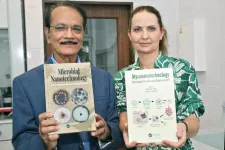(Press-News.org)
The ability to visualize faces, objects, landscapes, or even scenes from the past exists on a spectrum. While some can picture the layout of a city in minute detail and mentally walk through it, street by street, others have a perfectly blank internal cinema. In this case, we speak of aphantasia—the inability to voluntarily produce the visual mental image corresponding to an idea.
People whose aphantasia is congenital—i.e., not due to a stroke, brain injury, or psychiatric illness—become aware of their peculiarity reasonably late in life. Indeed, this small deficit in visualization does not cause any handicap, and they have no reason to suspect they are atypical. Nor do they realize that at the other end of the spectrum are hyperphantasic individuals who can produce mental images as precise as illustrations in a book.
“Talking to these people is fascinating. We tend to think that access to visual perception, conceptualization, and memory is the same for everyone. Nothing could be further from the truth," Paolo Bartolomeo, neurologist and researcher at Paris Brain Institute, says. “Aphantasics cannot mentally picture what their parents, friends, or partner look like when they are away. But they can still describe the physical characteristics of their loved ones: this visual information has been stored, in one way or another”.
Visual mental imagery in question
There is currently a lively debate about the origin of aphantasia. Is it linked to a perceptual deficit? Emotional and psychological factors? A slight difficulty in accessing one's sensations? To answer this question, Paolo Bartolomeo and Jianghao Liu, a doctoral student in the “Neurophysiology and Functional Neuroimaging” team at Paris Brain Institute, recruited 117 volunteers—including 44 aphantasics, 31 hyperphantasics and 42 people with typical mental imagery—and gave them a mental imagery and visual perception test.
“Our test, called the Imagination Perception Battery (BIP), is designed to assess the link between perception and mental imagery through the different visual qualities that enable a scene to be described—such as shape, color, position in space, presence of words or faces", Jianghao Liu explains.
Participants were asked to look at a blank screen. At the same time, an off-screen voice announced a visual quality (such as ‘shape’), followed by two words corresponding to concepts they had to materialize in their minds as accurately as possible (‘beaver’ and ‘fox’ for example). The voice also gave them a qualifier (such as 'long'); then, the participants were asked to decide which of the beaver or fox best matched the epithet ‘long’.
The speed and relevance of responses were recorded, and the respondents were asked to assess the quality of the mental image they had—or had not—managed to produce from the description. Finally, they had to take a perception test in which the stimuli were presented in a visual format: the long fox appeared in the form of an image accompanied by its audio description without the participants having to picture it.
When imagination takes its time
“Our results indicate that the performance of people with aphantasia is equivalent to other groups in terms of perception and the ability to associate a concept with its representation,” Liu comments. “With one exception! Aphantasics are, on average, slower than hyperphantasics and typical imagers when it comes to processing visual information, particularly shapes and colors. They also have little confidence in the accuracy of their answers”.
Previous studies have shown that aphantasics are just as quick as other people to answer questions that require manipulating abstract concepts. Therefore, only the processing of visual information is delayed for them. How can this phenomenon be explained?
“Participants in the aphantasic group perceive elements of reality accurately and show no deficits in memory and language processing. We believe that they present a slight defect of what we call phenomenal consciousness. This means that they have access to information about shapes, colors, and spatial relationships—but that this visual information does not translate into a visual mental image in conscious experience”, Bartolomeo says. “This peculiarity is probably compensated by other cognitive strategies, such as mental lists of visual characteristics, which allow aphantasics to remember everything they have seen.”
The future of perception
These preliminary results are limited by the data collection method, which consisted of an online questionnaire. However, they put us on a promising track to understand how visual mental imagery works. Future studies could reveal the neural mechanisms underlying these observations and, ultimately, help us to understand the visualization deficits specific to stroke patients.
“We also hope to develop interventional tools for certain psychiatric illnesses, such as post-traumatic stress disorder (PTSD), which is characterized by the eruption of images from traumatic memories. If we could rid patients of these intrusive mental images, it would greatly promote their recovery”, Liu concludes.
END
As of today, climate models face the challenge of providing the high-resolution predictions - with quantified uncertainties - needed by a growing number of adaptation planners, from local decision-makers to the private sector, who require detailed assessments of the climate risks they may face locally.
This calls for a step change in the accuracy and usability of climate predictions that, according to the authors of the paper “Harnessing AI and computing to advance climate modelling and prediction”, can ...
A paper published in the journal Monthly Notices of the Royal Astronomical Society hints at the existence of several black holes in the Hyades cluster — the closest open cluster to our solar system — which would make them the closest black holes to Earth ever detected. The study results from a collaboration between a group of scientists led by Stefano Torniamenti, from the University of Padua (Italy), with the significant participation of with Mark Gieles, ICREA professor at the Faculty of Physics, the ...
This September 24–29, at the 10th Heidelberg Laureate Forum (HLF), 200 young researchers in mathematics and computer science will spend a week of scientific exchange with the recipients of the disciplines’ most prestigious prizes: the Abel Prize, ACM A.M. Turing Award, ACM Prize in Computing, Fields Medal, the Nevanlinna Prize as well as its continuation, the IMU Abacus Medal. Below are a few highlights of the upcoming program of the HLF as well as a breakdown of how to cover this unique event.
More ...
Nanoparticles are tiny structures up to 100 nanometers in size. They are characterized by different physical and chemical properties and biological activity than their larger material counterparts. - When the starting material on a micro-scale with a specific surface area is broken down to nano size, i.e. into smaller particles, its surface area will increase many times. And it is the ratio of surface to volume that results in the unique properties of nanoparticles, explains Prof. Mahendra Rai from Sant Gadge Baba Amravati University in India.
Nanoparticles can be mainly ...
Close relatives of people with metabolic-associated fatty liver disease have a higher risk of developing liver cancer and dying from liver-related diseases, according to a national study from Karolinska Institutet in Sweden published in The Journal of Hepatology. This means that family members could also benefit from the lifestyle advice that is currently only given to patients, the researchers conclude.
People with metabolic-associated fatty liver disease (MASLD, formerly known as NAFLD – see fact box) have an elevated risk of developing and dying from liver cancer. MASLD is now the main reason why the number of people developing liver cancer ...
A new study has found that air pollution is preventing pollinators finding flowers because it degrades the scent.
A research team comprising the UK Centre for Ecology & Hydrology (UKCEH) and the Universities of Birmingham, Reading, Surrey and Southern Queensland, found that ozone substantially changes the size and scent of floral odour plumes given off by flowers, and that it reduced honeybees' ability to recognise odours by up to 90% from just a few metres away.
Ground-level ozone typically forms when nitrogen oxide emissions from vehicles and industrial processes react with volatile organic compounds emitted from vegetation ...
LAWRENCE — Many of us know all too well the addictive nature of many foods marketed in the United States — most call it “junk food.” In fact, this kind of salty, sweet and high-fat fare makes up the lion’s share of what’s marketed to Americans.
Researchers employ a more scholarly term for food items featuring purposely tempting combinations of salts, fats and sugars: They’re “hyperpalatable.”
Now, an investigator at the University of Kansas has conducted research showing food brands owned by tobacco ...
Computer scientists and mathematicians working in complex systems at the University of Sydney and the Max Planck Institute for Mathematics in the Sciences in Germany have developed new methods to describe what many of us take for granted – how easy, or hard, it can be to fall in and out of sync.
Synchronised phenomena are all around us, whether it is human clapping and dancing, or the way fireflies flash, or how our neurons and heart cells interact. However, it is something not fully understood in engineering and science.
Associate Professor Joseph Lizier, expert in complex systems at the University of Sydney, said: “We know ...
Developing new drugs is paramount in discovering innovative treatments and preventing diseases. This is vital not only for advancing medicine but also for the overall health and well-being of humanity. Yet, even when drugs demonstrate safety and efficacy in cell and animal models, they frequently encounter hurdles in clinical trials on human.
A single setback for a drug during clinical trials, which involves diverse population groups, can result in significant economic losses. To address this, it is imperative to understand why certain drugs, despite passing the preclinical stages, falter during clinical ...
In the summer of 1931, an unprecedented calamity unfolded along the Yangtze River basin in eastern China - the 1931 Yangtze River flood, known as one of history's deadliest natural disasters. This cataclysmic event submerged a staggering 180,000 km2, affected 25 million lives, and tragically claimed over 2 million lives.
Despite its immense societal impact, the origins of this monumental flood have remained largely unexplored, a challenge compounded by the scarcity of historical records and pre-1950s meteorological data in China. Recent access to crucial historical datasets has, however, unlocked the ability to investigate the 1931 Yangtze River flood.
A recent study published ...






